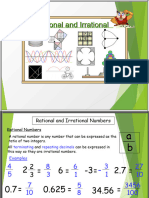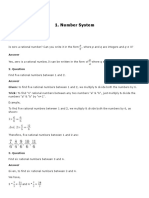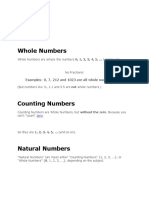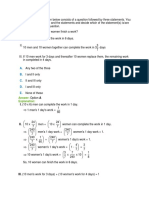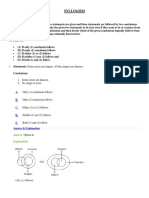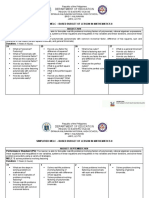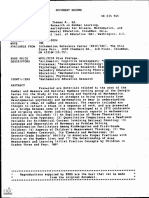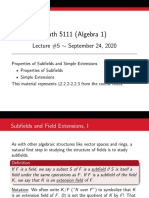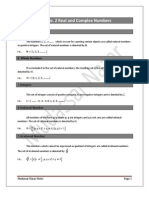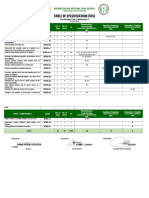100% found this document useful (1 vote)
128 views24 pagesReal Numbers: Rational vs. Irrational
This document discusses rational and irrational numbers as real numbers. It defines irrational numbers, explores their representation on the number line, and operations involving rational and irrational numbers. It also examines laws of exponents for real numbers.
Uploaded by
Himanshu PandeyCopyright
© © All Rights Reserved
We take content rights seriously. If you suspect this is your content, claim it here.
Available Formats
Download as PDF, TXT or read online on Scribd
100% found this document useful (1 vote)
128 views24 pagesReal Numbers: Rational vs. Irrational
This document discusses rational and irrational numbers as real numbers. It defines irrational numbers, explores their representation on the number line, and operations involving rational and irrational numbers. It also examines laws of exponents for real numbers.
Uploaded by
Himanshu PandeyCopyright
© © All Rights Reserved
We take content rights seriously. If you suspect this is your content, claim it here.
Available Formats
Download as PDF, TXT or read online on Scribd
/ 24


